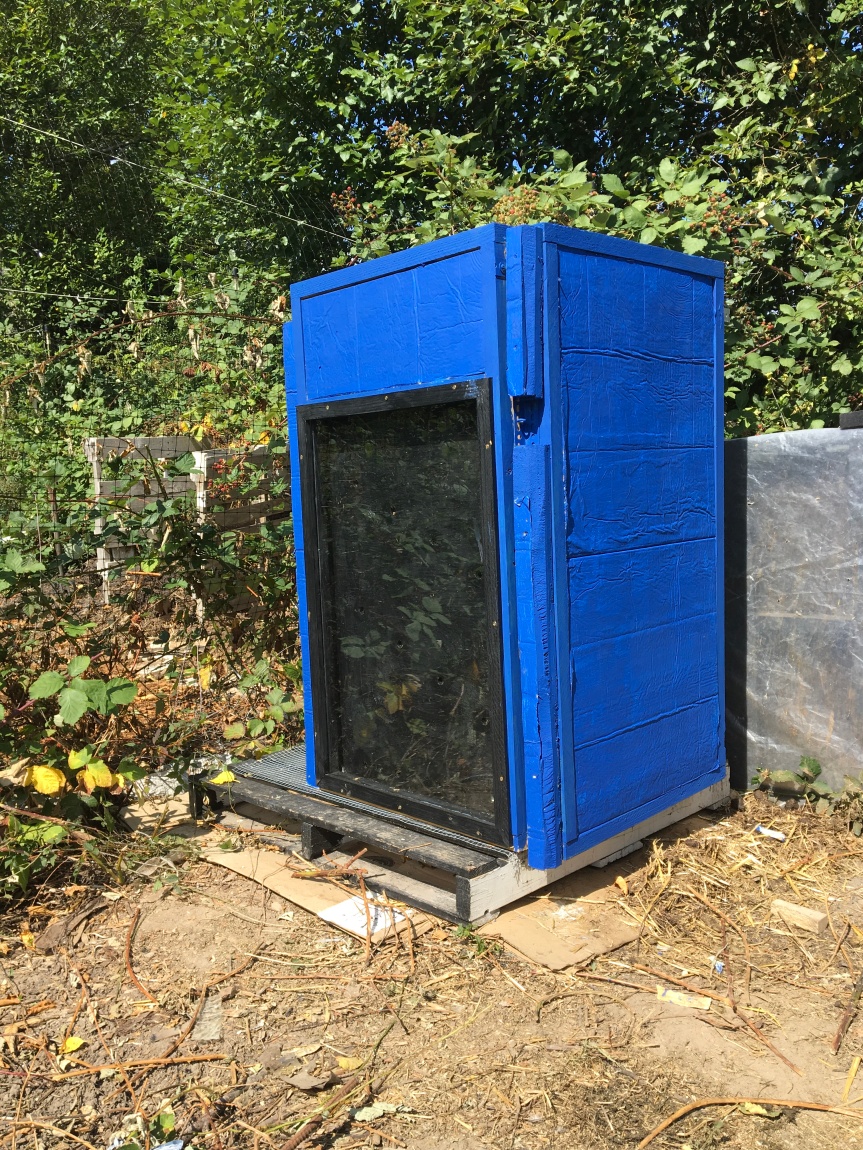 The latest experiment in composting.
The latest experiment in composting.

My last post outlined an experiment in which I attempted to use a passive solar heat collector to heat up compost. The idea was to speed up the decomposition process by using the heat from the sun to create a worm moist environment that was conducive to bacteria formation.
The idea was not a bad one. However, I ran into numerous problems associated with trying to get the heat from the solar collector into the composter. It is possible to add a fan to the solar heat collector, but then there is a thermodynamics problem that unless the air coming from the collector is at least as hot as the temperatures I am trying to achieve (140-160 degrees) then the collector will actually be cooling down the compost rather than heating it up.
As the collector only hits the maximum temperature when the sun is shining full on it, this means adding another electronic or mechanical gizmo to shut off the fan when temperatures fall.
These drawbacks, while not insurmountable, have led me to alter the design of the solar collector to incorporate it into the composter itself. In this way I hope to allow the transfer of heat to take place by conduction rather than convection with no need to use any mechanical devices.
The New Design:
The design of the new composter is a simple box measuring 2’x2’x4’. The walls are fashioned with frame panels measuring 2’x4’ with2” of rigid foam insulation. The south facing wall becomes the solar collector. And one wall is hinged to allow the box to be emptied. Lastly, I am trying out a sloped floor to allow gravity to help with compost removal.
Exploded Diagram:

The finished design looks like this:

The volume of the composter is about a quarter of the standard pallet compost frame. Nevertheless, it took six wheelbarrows of material to fill it.
Results:
Initial results are promising. Standing empty, the solar collector did begin to heat the interior of the compost chamber. With a bright sunny summer day, the interior temperature of the solar collector was 120 degrees. The interior air temp of the compost bin stayed a constant 95. In the morning the collector had fallen to 72 but with the sun it heated back up quite quickly. Outside ambient temperature in the morning was 64 degrees.
The first trial run of compost I started in the evening after the sun went down. The next morning with outside temp again 64, the temperature of the compost was a respectable 110 degrees ramping up to a respectable 120 as the day progressed.
The second day in the morning the compost temperature had risen to 135 degrees. By 3PM the temperature of the compost hit the magical 140 degrees.
Conclusions:
The composter is definitely successful. Though I am not sure exactly how much of that success – if any – to attribute to the solar collector. While the collector is definitely a help in warming up the compost at the start (when the sun is shining) I suspect that ultimately the insulation will prove to play a bigger role in maintaining the conditions conducive to thermophilic bacterial activity.
The Tardis:
The obvious tall rectangular shape was so evocative of the Tardis time machine from Doctor Who I had to go find some blue paint to finish it off. Looks pretty good I think!



“Allons-y!” Great post! Love the TARDIS composter! I always enjoy running into another fan, especially if they’re also a serious gardener!
LikeLike